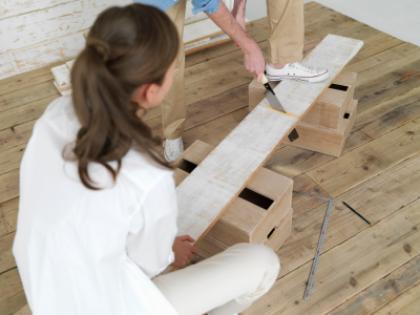Chemical poisoning, blindness, cuts and amputations, skull fractures and even loss of hearing – these are just some of the potential injuries that can arise when carrying out DIY in the home, especially when personal safety equipment fails to provide the protection that you really need.
It begs the question: how safe are you really when tackling home improvements?
Many wrongly assume that all safety products such as hard hats, safety glasses, respirator masks, hearing protectors, safety harnesses and safety footwear that are sold by Australian retailers meet mandatory standards – this is not always the case. Despite there being Australian Standards (sometimes mandatory), some manufacturers and suppliers may not comply with them, others are totally ignorant, particularly when a product has been developed overseas.
SAI Global’s well-known Five Ticks ‘Certified Product’ StandardsMark™ is an indication that the product and the manufacturing process have been independently tested against safety criteria set by the relevant Australian Standards. Products that have not been independently certified to meet Australian Standards may not have been rigorously tested against potential dangers.
For example, a cheap pair of safety glasses may look okay, but may be unlikely to withstand the pressure of a fragment of steel hurtling through the air at speed.
Similarly, a respirator mask may not provide the expected effective barrier to hazardous chemicals or materials you’re working with. This is why anyone carrying out renovations must take additional caution when shopping for their safety items.
Here are my top five precautions to ensure DIY safety.
1. Ask an expert
While all equipment looks the same, it doesn’t necessarily mean that it does the job. For example, a particular respirator mask may only be compatible with certain chemicals or materials. When unsure, ask the retail staff and provide them with the exact details of what you intend to do. Don’t take a gamble, especially when working with tools or chemicals.
2. Purchase certified safety equipment only
This equipment will be branded with an appropriate certification mark, the Australian Standard reference, and should include the name of the organisation, the date it was certified and a Certification Licence number. Be aware that not all products that claim to be certified are to an Australian standard. To be safe, look out for the Five Ticks ‘Certified Product’ StandardsMark™ or enter the Certification Licence number online.
3. Be careful when buying second hand
Do you really know what that piece of equipment has been through? For example, a hard hat may look okay, but if it’s been left out in the sun every day, the chances are that its protection is nowhere near the level it should be due to strong UV rays, weakening its shell. Additionally, second hand DIY equipment may come with zero instructions. “They’re not the kind of equipment that you want to be playing a guessing game with,” Richard says.
4. Work with a partner
Find a partner who can share a load of the work or observe what you’re doing. A second set of eyes can assess risks that you may have initially missed.
5. If you’re tired, stop
It’s tempting to want to continue on a project well into the night, until it’s near complete. It’s best, however, to allocate yourself time periods where you will work on a project. Ensure that you’re feeling refreshed and have a clear head. If you’re only a fraction of the way through the job but feel distracted or drowsy, then stop. This is the prime time for mistakes to happen. Clear away any hazards such as cables, tools or debris and start again when you feel able.


















__small.png)










